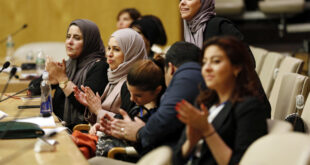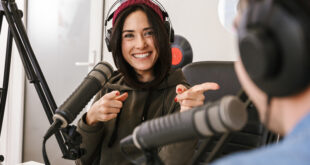
A persistent question amongst Arab thinkers simply stated is this: What does the future hold for culture in our land?
If we think about it, the word "culture" holds multiple meanings for each of us. For that reason, I should begin with a definition of the concept. It is all that a people possesses of beliefs, concepts, arts, customs, and traditions; these are lodged in the psyche of all individuals and govern their actions in all aspects of life, political, economic, social, etc. As such, culture is what distinguishes any community or nation. Just as a person can be recognized by the features of his face, so can the features of a people be recognized in their culture, especially their arts.
Imagine a person with no facial features. Suppose you looked into the mirror this morning and did not see any features on your face. The culture and art of a people are the features of its face. And I am sorry to say that the features of our Arab nation have been obliterated; they are lost to all of the wellsprings of our culture and art -- poetry, literature, song, theatre, the plastic arts, archaeology, and all else.
Some are sure to ask why the features of culture have been obliterated in our lands. The reasons are many, some political, some economic, and some religious. I can say briefly that the political reasons are embodied in the lack of freedom, which is itself the secret of the creativity of any artist, and the lack of any coherent national project or great dream for the Arab nation, or even the hope for a renaissance that might ignite the energies and creativity of poets, writers, and artists.
For their part, the economic reasons are simply that in difficult times art becomes no more than a remunerative vocation rather than a higher calling. Humans lose their sensitivities, creativity, and their respect for art in their quest for a crust of bread.
Now to the reasons of religion. There has been in circulation for long years the erroneous notion that religion is opposed to art, or that it sees art as entirety interdicted (haram). Many a distinguished artist, believing this, has retired, whereas in truth, religion is innocent of the charge that it repudiates art. To the contrary, Islam has taken a great interest in the arts and culture and their influence on refinement of sensitivities and taste and the development of the psyche and the spirit. Indeed, the prophet Muhammad endeavored to fix in the community the importance of culture and the arts. He did this in many ways, the most obvious of which was through the use of drawing in making a point. He was also a lover of poetry and he would receive poets with the warmest of welcomes.
This is especially well illustrated by the place the poet Hassan Ibn Thabit held in the affections of the Prophet, who would say to him, "Address me in verse," and "The Holy Spirit is with you." He never said things like this to any of the other Companions; instead he spoke thus to a man who possessed the power of creativity, thereby endorsing the enterprise of culture and the arts and serving thought and the advancement of understanding in the community.
Islam did not repudiate earlier culture, it employed it in service of the new idea it was calling for. Nor did it renounce the mu'allaqat (pre-Islamic odes), poetry, or the annual poetry competitions held at the market town of 'Ukaz and other places. It simply transformed it from an unstructured culture into an advanced one. It played an enormous role and exercised far-reaching influence in the establishment of a great civilization, which has lasted for thousands of years.
The scriptures speak to us of the prophet David and his voice and his lyre, the sweetness of which affected even the birds and the mountains. This is a fine distinction to make, that it was he especially who possessed such a fine voice. Why he? The age of David was also an age of widespread advancement in many spheres, from the creation of a powerful army to the establishment of a moral order, which would not have succeeded without the element of art and aesthetics represented by David's voice.
Every community occupies a certain point along the curve of advancement; some are at the apex of the curve while some are at the nadir. There are others needing a boost along the curve. I believe this part of the world is at the beginning of the curve, and we want it to take a higher position. Simply stated, what is needed are arts and culture appropriate to the stage it is passing through.
What is needed are arts and culture that will propel youth toward work, development, and production. What is needed are arts and culture that will arouse the energies of youth, because speaking quite bluntly, I can say that the art that is offered to Arab youth at present does not fulfill that role at all. To the contrary, it is driving society toward flaccidity and collapse.
A clear example of this is the video clip. Recorded music is an extraordinarily affective medium for the human psyche. The history of the Arab world shows that. In the 1950s, Egypt and many of the other Arab countries were just at the beginning of their independence and at the beginning of an age of hope for a complete transformation of society. Suddenly, the songs became freighted with the ambitions of the people for the success of the enterprise. For long years the Arab people responded to these songs, and they live in the minds of the Egyptian and Arab people even now, because there was a cause worth singing about. But the video clips look like an exhibition of pictures in which everything is topsy-turvy.
Nowadays video clips comprise imported images superimposed on localized words with no meaning to them. The result is something that fails to edify the mind while at the same time ruining the aesthetic sense and the artistic taste of the audience. Many people think that the greatest problem with the latest video clips is that they incite the latent appetites of youth, but the way I see it is that the greatest scandal of current video clips is not that they arouse desire but that they pervert the aesthetic sense.
What is needed, then, is that all creative artists employ their art to drive the wheels of progress in the area.
To understand the relationship between our culture and other world cultures, we must first recognize that with the information revolution, the world has become a small village. Whatever happens in the East truly affects what happens in the West, and it is impossible to imagine a culture existing closed in upon itself and isolated from other cultures. Whoever sees the necessity of refusing to engage with other cultures is living in a cultural coma. Instead, we should be interacting with other cultures and reaching understandings with them (as the Quran says: "We have made you peoples and tribes so that you may know [one another]). But at the same time, we must watch to see that what we adopt from other cultures is appropriate for the stage of development that we are passing through. If it is, then it should propel us along the curve of development. If it is not, then there it is meaningless for us to adopt it.
In the end, I call to all thinkers and artists of the Arab world and I say to them we want to draw with our own hands the features of the renaissance of our land.
 Arab Media & Society The Arab Media Hub
Arab Media & Society The Arab Media Hub




